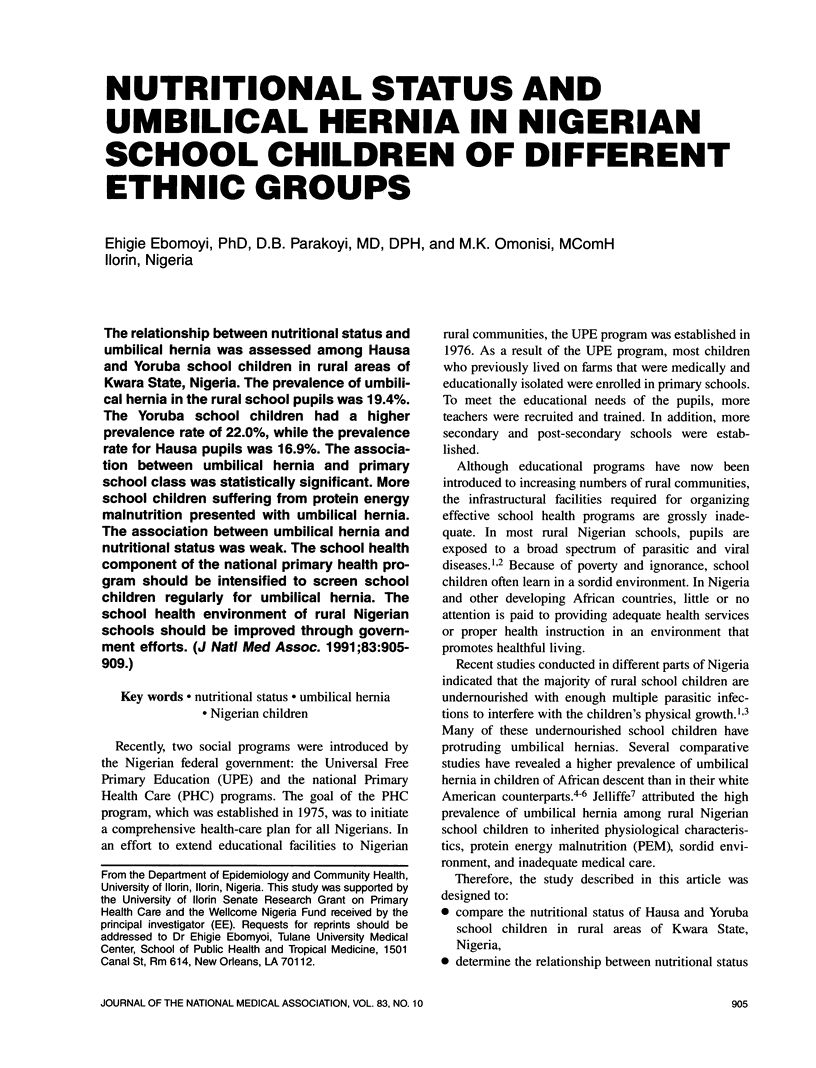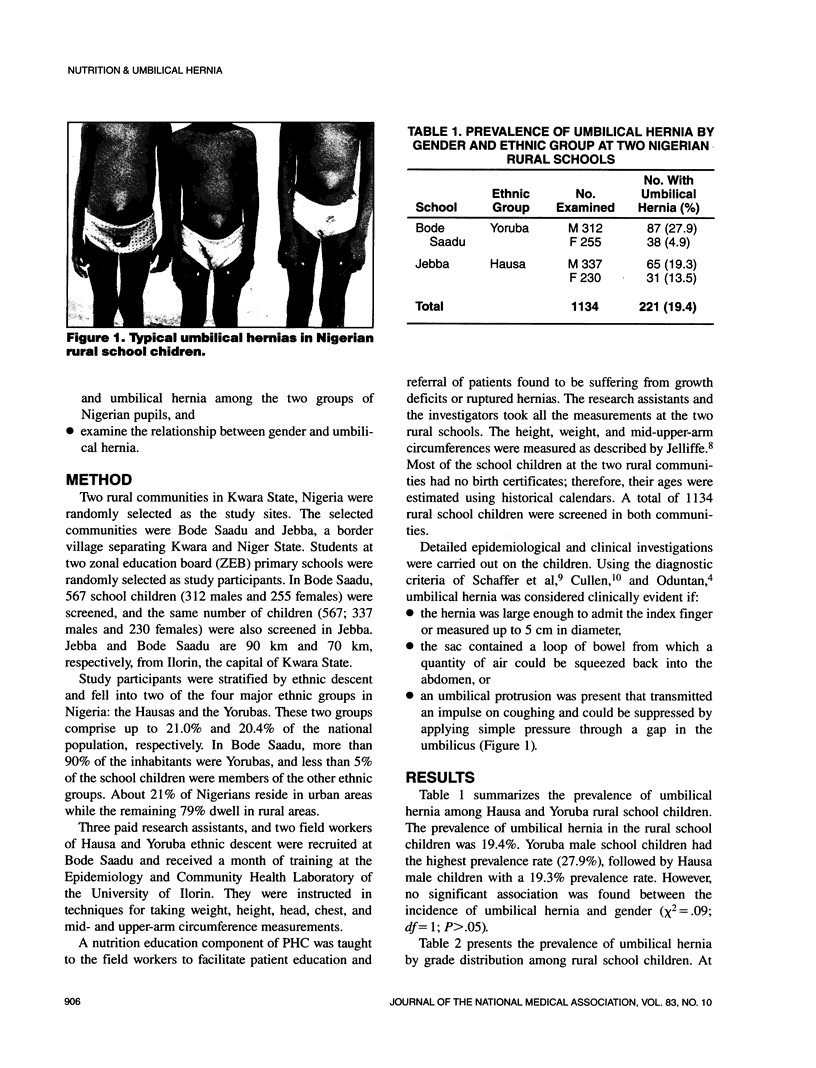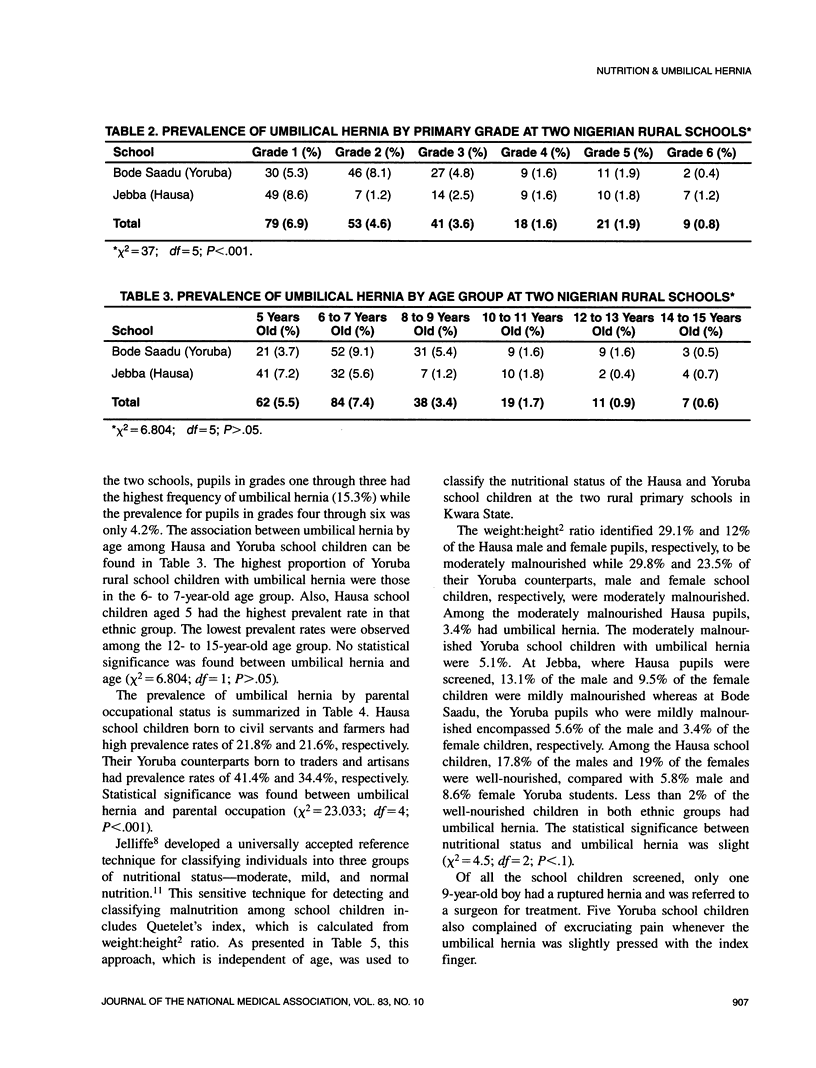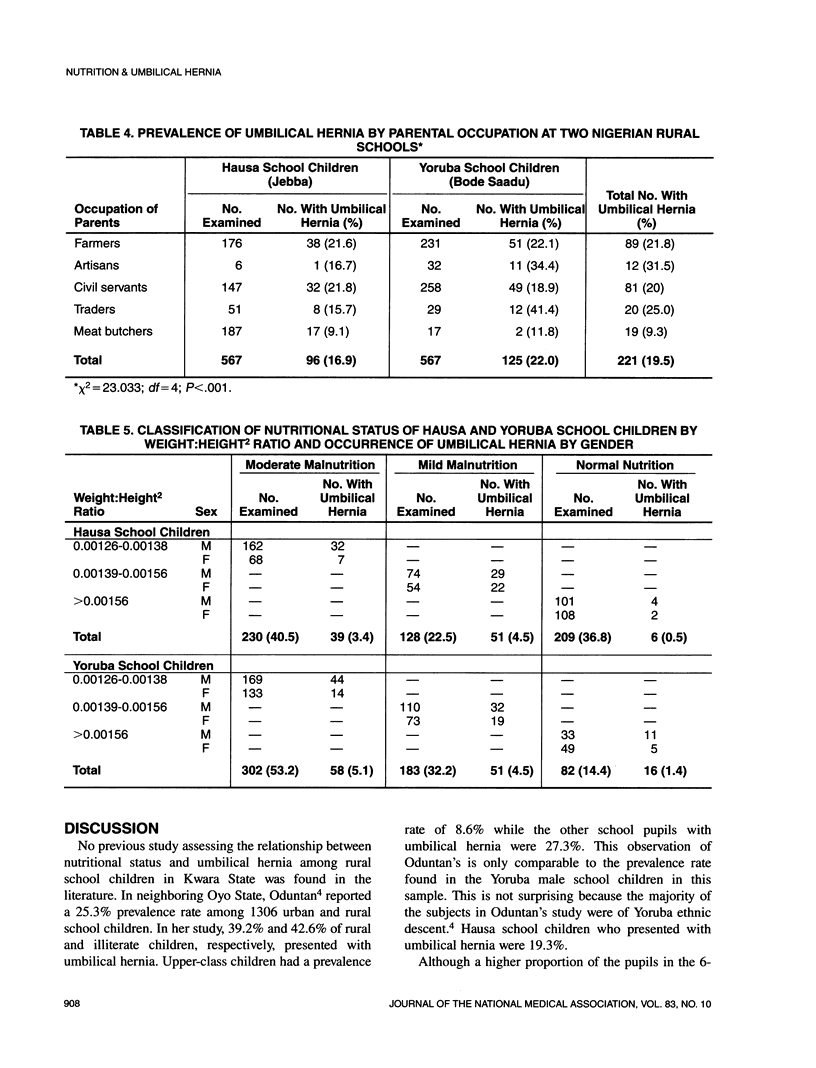Abstract
The relationship between nutritional status and umbilical hernia was assessed among Hausa and Yoruba school children in rural areas of Kwara State, Nigeria. The prevalence of umbilical hernia in the rural school pupils was 19.4%. The Yoruba school children had a higher prevalence rate of 22.0%, while the prevalence rate for Hausa pupils was 16.9%. The association between umbilical hernia and primary school class was statistically significant. More school children suffering from protein energy malnutrition presented with umbilical hernia. The association between umbilical hernia and nutritional status was weak. The school health component of the national primary health program should be intensified to screen school children regularly for umbilical hernia. The school health environment of rural Nigerian schools should be improved through government efforts.
Full text
PDF




Images in this article
Selected References
These references are in PubMed. This may not be the complete list of references from this article.
- JELLIFFE D. B. The origin, fate and significance of the umbilical hernia in Nigerian children (a review of 1,300 cases). Trans R Soc Trop Med Hyg. 1952 Jul;46(4):428–434. doi: 10.1016/0035-9203(52)90059-x. [DOI] [PubMed] [Google Scholar]
- Jelliffe D. B., Jelliffe E. F. Age-independent anthropometry. Am J Clin Nutr. 1971 Dec;24(12):1377–1379. doi: 10.1093/ajcn/24.12.1377. [DOI] [PubMed] [Google Scholar]
- Oduntan S. O. Umbilical hernia in Nigerian children of different socio-economic status. Trop Geogr Med. 1972 Jun;24(2):134–137. [PubMed] [Google Scholar]
- Orwell S., Clayton D., Dugdale A. E. Infant feeding in Nigeria. Ecol Food Nutr. 1984;15(2):129–141. doi: 10.1080/03670244.1984.9990818. [DOI] [PubMed] [Google Scholar]
- WACHTER H. E., ELMAN R. Aberrant umbilical stomach: report of two cases. AMA Am J Dis Child. 1954 Feb;87(2):204–207. [PubMed] [Google Scholar]




